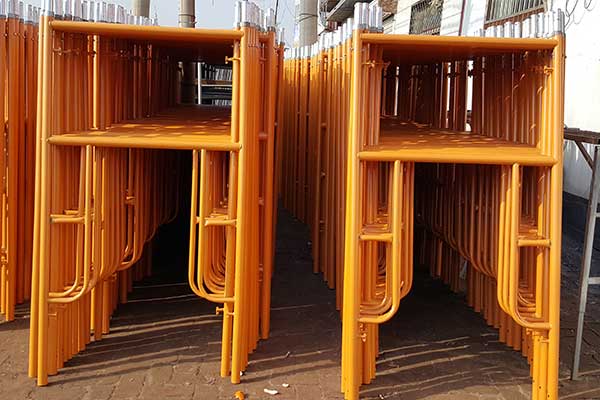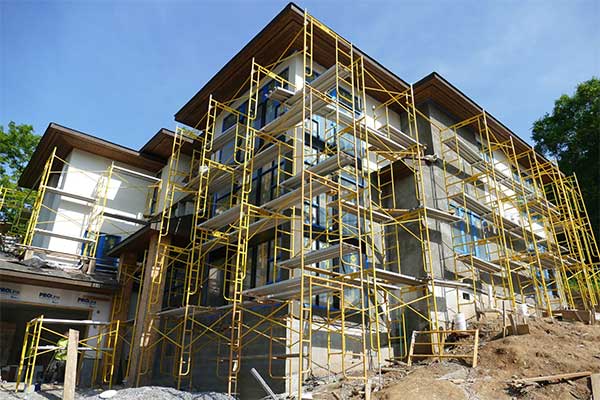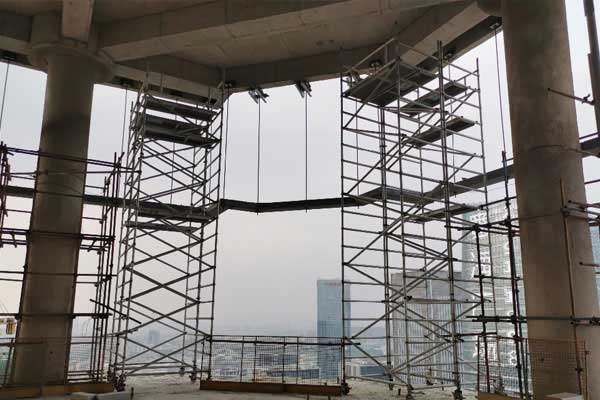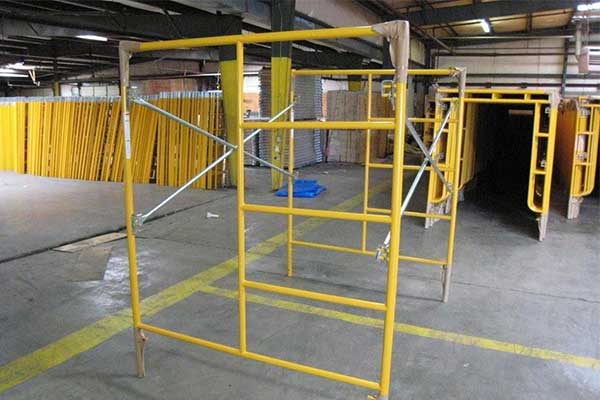What is a Scaffolding Frame? What You Need to Know
Scaffolding frames are essential components in the construction industry, providing temporary support structures for workers, materials, and tools at elevated levels. Used in a wide range of projects from building maintenance to large-scale construction, scaffolding frames ensure the safety and efficiency of the work being done.

What is a Scaffolding Frame?
A scaffolding frame is a type of modular scaffolding system made up of steel or aluminum tubes arranged in a vertical and horizontal framework. This framework is assembled to create a sturdy platform that workers can stand on to carry out construction, repairs, or painting tasks on buildings or other large structures.
These frames are often referred to as “frame scaffolding” because of their rectangular frame design, which allows easy assembly and disassembly. Scaffolding frames are widely used for their simplicity, versatility, and reliability on various job sites.
Types of Scaffolding Frames
There are several types of scaffolding frames, each suited for different construction needs. Here are the most common types:
1. Mason Frame Scaffolding
This is one of the most commonly used scaffolding frames. It features two vertical posts connected by horizontal bars, forming a simple, yet sturdy, structure. It’s typically used for masonry work, hence the name, but can also be employed for other purposes.
2. Ladder Frame Scaffolding
As the name suggests, ladder frame scaffolding has built-in ladder sections, allowing easy access to higher levels. This type of scaffolding is ideal for light construction, painting, and repair tasks where mobility and ease of use are priorities.
3. Walk-Through Frame Scaffolding
Walk-through frames are designed to allow workers to pass through the scaffolding without obstruction. This type of frame is especially useful on busy construction sites where multiple workers need to access different parts of the structure simultaneously.
4. Heavy Duty Scaffolding Frame
For large-scale industrial or commercial projects that require extra strength and durability, heavy-duty scaffolding frames are designed to support heavier loads and withstand more demanding conditions. These frames are ideal for projects that involve lifting and storing heavy construction materials.

Key Components of a Scaffolding Frame
Understanding the parts of a scaffolding frame helps to appreciate how it functions:
- Standards (Vertical tubes): These vertical poles support the load of the scaffold.
- Ledgers (Horizontal tubes): These horizontal bars run parallel to the building and provide support to the standards.
- Braces (Diagonal tubes): Diagonal bars that provide additional stability to the structure.
- Couplers: Used to join components of the scaffolding together.
- Planks/Platforms: Horizontal working surfaces where workers stand and perform tasks.
Benefits of Scaffolding Frames
Scaffolding frames provide several crucial benefits in construction:
- Worker Safety: By offering a stable and secure platform, scaffolding minimizes the risk of falls, one of the leading causes of injuries in construction.
- Efficiency: Scaffolding allows workers to access hard-to-reach areas quickly and easily, speeding up the construction process.
- Cost-Effectiveness: Scaffolding can be reused and adapted to different projects, making it a cost-efficient investment.

Common Applications of Scaffolding Frames
Scaffolding frames are a popular choice in various industries. Here are some typical applications:
- Building Construction: Scaffolding frames provide access to different levels of a building, enabling workers to safely perform tasks like masonry, plastering, and painting.
- Maintenance and Repairs: They are often used for routine maintenance work, such as cleaning windows, repairing facades, or replacing building materials.
- Bridges and High Structures: Scaffolding frames are critical for the construction and repair of bridges and other large, high-rise structures, where access to elevated areas is necessary.
Safety Considerations for Scaffolding Frames
Ensuring the safety of workers on scaffolding frames is crucial. Here are some key safety measures to follow:
- Proper Assembly: Always follow manufacturer instructions when assembling scaffolding frames. Incorrect assembly can lead to structural instability and accidents.
- Weight Limits: Ensure that the scaffolding frame system is not overloaded with workers, tools, or materials. Exceeding weight limits can compromise the system’s integrity.
- Regular Inspections: Inspect scaffolding frames regularly for any signs of wear, damage, or loose connections. Address issues immediately to prevent accidents.
- Training: Ensure all workers are trained in scaffold safety and know how to properly use the structure, including climbing and descending safely.
- Fall Protection: Install guardrails, safety harnesses, and other fall protection systems to minimize the risk of falls from height.

Choosing the Right Scaffolding Frame
When selecting a scaffolding frame, it is essential to consider the following factors:
- Project Requirements: The height and complexity of the project will determine which scaffolding frame is best suited for the job. For tall structures, you may need a more robust scaffolding frame with reinforced supports.
- Material: Scaffolding frames are typically made of steel or aluminum. Steel offers greater strength and durability, while aluminum is lighter and easier to transport.
- Safety Standards: Ensure the scaffolding frame you choose meets the local safety regulations and certifications. It’s important to conduct regular inspections to confirm the structural integrity of the frame.
- Environmental Conditions: Consider the weather and terrain when choosing a scaffolding frame. For example, if you are working in windy or uneven conditions, opt for frames with additional stabilizers and supports.
Conclusion
A scaffolding frame is a critical tool in any construction or maintenance project involving heights. From providing safety and access to increasing efficiency, scaffolding frames are indispensable in various industries. If you are looking for these products for your project, you can contact Shelter’s experts directly to get more information.
